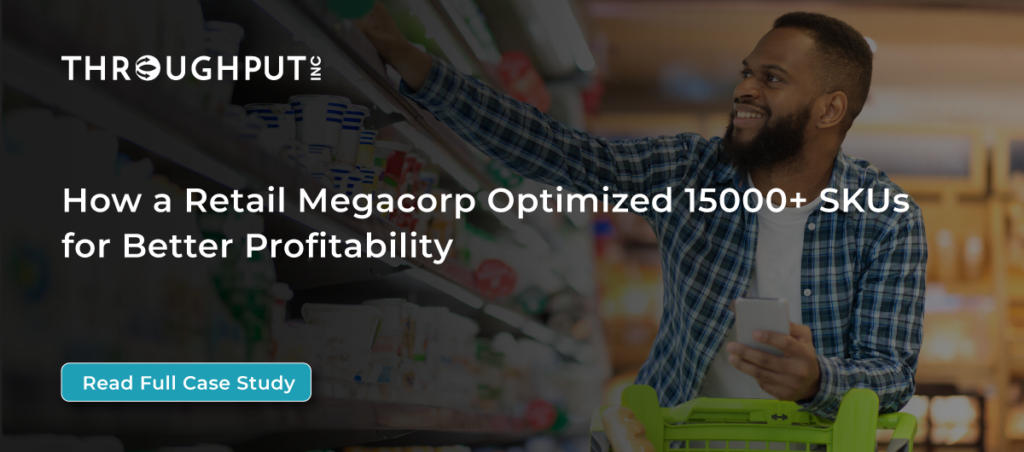AI in the Retail Industry: Benefits, Case Studies & Examples

The Evolution of Retail Supply Chain & Logistics: A Pre-AI Overview
In the pre-AI era, the retail sector was markedly different, especially since the traditional supply chain and logistics models were largely driven by manual labor. Every aspect of operations, be it managing the inventory, forecasting demand or fulfilling orders was dependent on human wisdom and intuition. Every decision was based on data generated and analyzed by humans.
Consequently, inefficiencies were common, especially issues like overstocking or stockout situations that resulted in wastages. Real-time visibility was lacking, be it in warehousing or transportation, due to which delivery delays were common. Inflexible and rigid systems made it challenging for retailers to adapt to changing market demands with agility.
The market slowly evolved and technology has advanced significantly, both of which have now transformed the retail supply chain.
How is AI Revolutionizing Retail Supply Chains?
AI technologies are deeply impacting retail supply chains. While on one hand, predictive analytics analyzes historical data and market trends for accurate demand forecasting, on the other, customers are being offered personalized experiences based on their preferences, purchase history and behavior. Besides, AI is helping retailers optimize inventory, warehouse and pricing.
Chatbots and virtual assistants are revolutionizing customer services while new-age technologies like Augmented Reality (AR) are offering immersive experiences to customers, reducing the likelihood of returns. Other than this, AI algorithms are making the systems more secure by detecting anomalies, loopholes and fraudulent activities much in advance.
In short, AI is opening up a host of opportunities for enhancements and improvements in the retail sector.
Benefits of AI in the Retail Industry
- Enhancing Accuracy in Demand Forecasting
Forecasting demand has never been this accurate before. AI tools use historical data and current trends to understand demand with higher precision helping meet customer needs without overstocking or falling short on stock.
In response to fluctuating demand, ThroughPut AI for instance, enables forecasting near-future demand further improving the accuracy of the forecasts and subsequent planning to meet the demand.
- Streamlining Inventory Management and Reducing Waste
With the help of AI-powered predictive analysis, retailers are optimizing stock levels, streamlining inventory, saving storage costs and minimizing waste.

- Improving Delivery Speeds and Customer Satisfaction
Artificial Intelligence is enabling the optimization of delivery routes and logistics operations. This has made deliveries faster. Another way of ensuring greater customer satisfaction!
- Anticipating Bottlenecks and Finding Alternative Routes
AI works with real-time data and offers visibility into various metrics that can disrupt the supply chain. It can also suggest alternate routes and strategies to retailers to maintain uninterrupted and smooth operations.
- Informing Logistics
By analyzing and interpreting volumes of data, AI helps retailers gain meaningful insights into their operations facilitating informed decisions related to logistics and supply chain management.
- Intelligent Warehousing with AI Analytics
AI-driven analytics optimizes warehousing operations helping improve storage space and efficiency. Such detailed analytics also reduce retrieval times for faster order processing.
- Capacity Buffers to Ensure On-time Delivery
Demand sensing and predicting demand spikes help retailers adjust capacities accordingly. Thus, even during peak periods, on-time delivery is assured.
- Real-time Updates
Data-driven artificial intelligence offers real-time tracking of inventory levels, deliveries and other elements of the supply chain. This facilitates transparency across the chain.
- Dynamic Pricing
If you want to adjust the prices of your products dynamically, AI tools are the best. This is because AI algorithms analyze current demands, inventory levels and competitor pricing for price optimization and sales maximization.
- Personalized Marketing
AI leverages volumes of customer data to offer personalized communication that helps increase engagement and conversion rates.
- Harmonize Online and Offline Retailing
One of the effective uses of AI is how it integrates online and offline retailing, offering a seamless shopping experience for customers.
How AI is Used in Retail?
Savings through Product Mix Optimization
A European retail company that has been operational for the last 65 years has operations spread across 100 stores and warehouses with 15000+ products in multiple categories.
Despite its competitive advantage of being the first retailer in the region to offer organic products and sell online, the company was struggling with poor visibility into the demand for each of its 15000 SKUs. As a result, the operational and logistical costs were rising and the risk of overstocking underselling products and understocking in-demand products was also growing.
With the help of Throughput’s AI-powered Demand Sensing tool, this retailer was able to identify approximately 200 items with sporadic demand and poor OTIF fulfillment rates. It then deprioritized the production and distribution of these products and focused more on high-demand SKUs.
Over a period, the company’s new product mix optimization strategy boosted profit margins by €30 million and reduced operating expenses by €2 million by better allocation of the top 150 SKUs.
A bottom-line impact of up to €10 million per facility was achieved, boosting sales, profits & turnover.

Savings Through Logistics Optimization
A retail chain with over 25,000 products in various categories faced operational disruptions and struggled to adjust to changing demand. Entering e-commerce required faster order fulfillment, which the chain couldn’t achieve, leading to high logistics costs.
Throughput’s AI-powered logistics capabilities provided a solution by dynamically adjusting distribution for each center, optimizing shipments in real-time, and eliminating unnecessary transfers between centers.
The result was significant: savings of €3-6.5 million annually on logistics, a 20% reduction in SKU volume, 33% lower transportation costs, and an OTIF rate of over 90%.
Other Examples of AI in the Retail Industry
AI in the retail industry is helping improve customer experiences on one hand and operational workflows on the other. Let’s see how three major retail giants are integrating AI into their day-to-day operations.
Zara
The company uses AI for streamlining the supply chain flow and uses customer data analysis extensively for demand predictions. It also uses AI to understand sales patterns that help predict market trends so that production can be adjusted in real time. The fast-fashion brand has successfully minimized overproduction and gained agility in responding to changing trends in the fast-paced industry.
Walmart
Artificial intelligence is used by Walmart across its operations, especially customer services and inventory management. Through consistent analysis of purchasing patterns and stock levels, stock optimization is done to minimize surplus. AI-driven robots help improve in-store inventory tracking and management.
Amazon
Personalized shopping experience for customers is one of the biggest uses of AI in Amazon. The tools are powered by sophisticated recommendation algorithms. At the operational level, AI is used for logistics optimization, warehouse automation and route optimization for faster deliveries.
Startups too are integrating and leveraging AI in retail to improve operations and offer better customer experiences. From personalized shopping recommendations to inventory management, stock optimization, and demand sensing using predictive analytics, a lot is being done in the areas to enhance user engagement.
What are the Challenges and Considerations for Implementing AI in the Retail Industry?
AI in the retail industry comes with its own set of challenges and retailers need to navigate the landscape with care. The three main challenges are:
- Cost: Integrating AI technologies can be substantially high investment, especially the initial investment and the ongoing expenses related to costs like updates, maintenance and training. It can be pretty daunting for small-time retailers.
- Technological Compatibility – AI solutions need to be seamlessly integrated with the existing systems. Therefore, substantial adjustments need to be made to infrastructure that would require high proficiency of skills and resources to operate the systems.
- Workforce Implications – AI would demand a shift in skill sets which would require extensive training for existing resources. It would also mean hiring new resources competent in this new-age skill.
Conclusion
In the retail industry’s supply chain, artificial intelligence has initiated a revolution. All of this has resulted in boosting efficiency and customer satisfaction.
Using predictive analytics, AI enables accurate forecasting, optimization of inventory and waste reduction. Such is the level of accuracy that retailers can ensure the availability of the right product based on demand sensing.
Warehousing automation and delivery process optimization are speeding up operations helping retailers cut costs. AI-driven customer service helps personalize the customer experience and strengthen brand loyalty.
Not just in the present, the future potential of AI seems brighter as evolving algorithms will further boost accuracy in demand forecasting.
Are you looking for an AI solution to power up the productivity and performance of your retail business? If yes, we are a call away.
Throughput’s AI suite can help enhance your operational efficiency, sales and revenues with product mix optimization, logistics optimization and smart pricing and promotional strategies. Contact us to leverage AI in your supply chain management and be future-ready.
